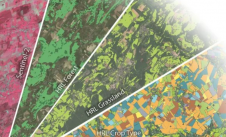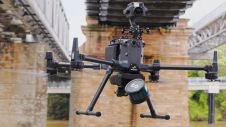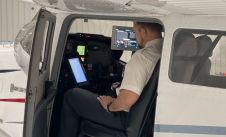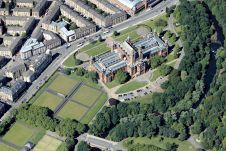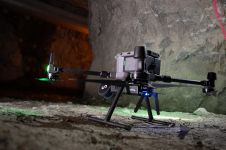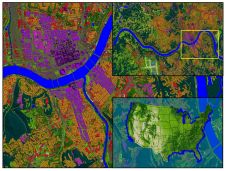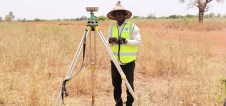NYU Professor Captures Densest-Ever Public Aerial Lidar Data
This article was originally published inGeomatics World.
Professor Debra F. Laefer with New York University’s (NYU) Center for Urban Science and Progress has released what they are calling ‘the world’s densest urban aerial lidar data set’. At over 300 points per square metre, this is more than 30 times denser than typical LiDAR data. The dataset which was collected in Dublin, Ireland, also includes the first ever urban scan with the full-wave form version of the data, as well as affiliated imagery and video. The multi-layered dataset enables new opportunities in exploration and modelling. It also sets a new standard for what can be collected and used by cities around the world. The data and affiliated information is now publicly available through NYU’s Spatial Data Repository (SDR).
而不是使用Geiger-mode,他们使用了TopEye年代ystem S/N 443. Imagery data was then captured using a Phase One camera system. The average flying altitude was 300m with a total of 41 flight paths with a special orientation and multi-pass approach that was developed that sets the orientation of the flight patch diagonal to the main orientation of the street grid. There was a 67% overlap to rid us of the traditional blind-spots that arise from nadir-oriented equipment.
Through sparse deconvolution they were able to resolve echo information with as little as 15cm separation (as opposed to 60-70cm assuming a Gaussian approach). This enabled them to harvest up to four times as much information where the laser beam is encountering multiple surfaces. This could greatly enhance facade data recovery, which is always difficult because of the nadir orientation of the equipment. The full-wave form data may provide important insights to aid automated material classification, which would improve modelling for many urban problems such as urban heat island, blast-wave and noise propagation prediction and seismic vulnerability.
So, is it feasible to perform this project again to attain a new dataset and compare changes? Well, they already done this in the form of our previously published 2007 data, for a slightly smaller area wholly contained within the 2015 data. The flight pattern and height were similar, but the improved equipment enabled a 50% increase in data density. Future data acquisition and comparison of that acquisition should be readily attainable using typical industry standards for referencing, as were applied during this project. They are now hoping to do this for a section of New York City to show that the approach works for very high-rise cities as well.
Professor Laefer is currently working on a project called urbaneyes that would bring to market an entirely new spatio-temporal database system. The approach incorporates new indexing strategies that both exploit distributed computing and fully support the integration of a vast array of data types, formats, and granularities that could be queried easily over both time and space. Eventually such a system would be no more difficult to use than a common GPS-based navigation system.
Make your inbox more interesting.Add some geo.
Keep abreast of news, developments and technological advancement in the geomatics industry.
Sign up for free

